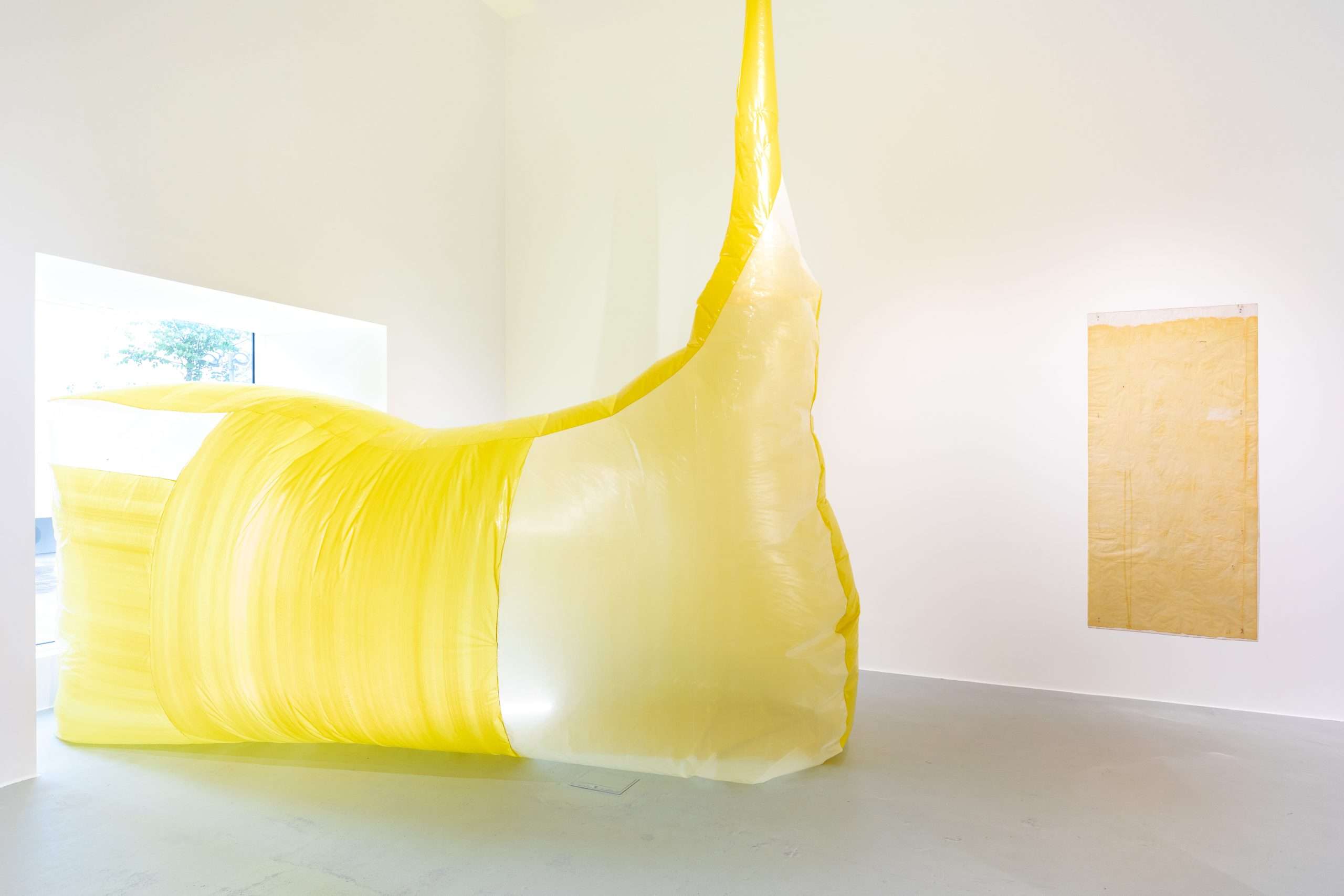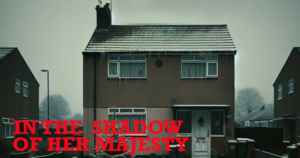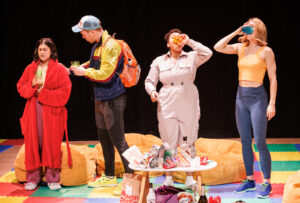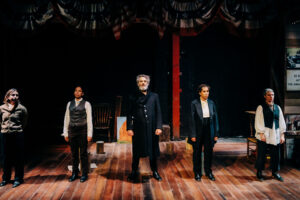A home in London is an increasingly fragile dream. UNBUILD: a site of possibility, is Drawing Room’s first exhibition in their permanent home after 20 years of nomadic tenancies. They have invited five artists to inhabit their new space, to help answer the question of what this space will be for the artists who work within it and the community that surrounds it, writes Madeleine Kelly.
It is not an easy question. Drawing Room’s new home is owned by developer London Square. They bought the old Branston Pickle Factory in 2016, planning to turn it into a combination of luxury flats and artists’ studios with 35% of the homes being marked out for affordable housing. As ‘one of the most fashionable districts in London, with a great creative vibe’, Bermondsey was a desirable location for London Square who wished ‘to build on this to redefine this as a new destination in SE1.’
Given this context, UNBUILD seems an odd title for Drawing Room’s first show in their new home. The dis-ease goes beyond the name. First, of course, there are the bodies. There is a large yellow lung in the corner. The lung is Ian Kiaer’s creation, an inflatable that protrudes into the space disrupting the clean lines of the four white walls. Then, there is Emily Speed’s table. On it a wattle construction embedded in what could be a coffee table appears on closer inspection to be hessian fingers clinging onto the wood. These fingers further dissolve the space between building and body, making and unmaking the structures we live in.
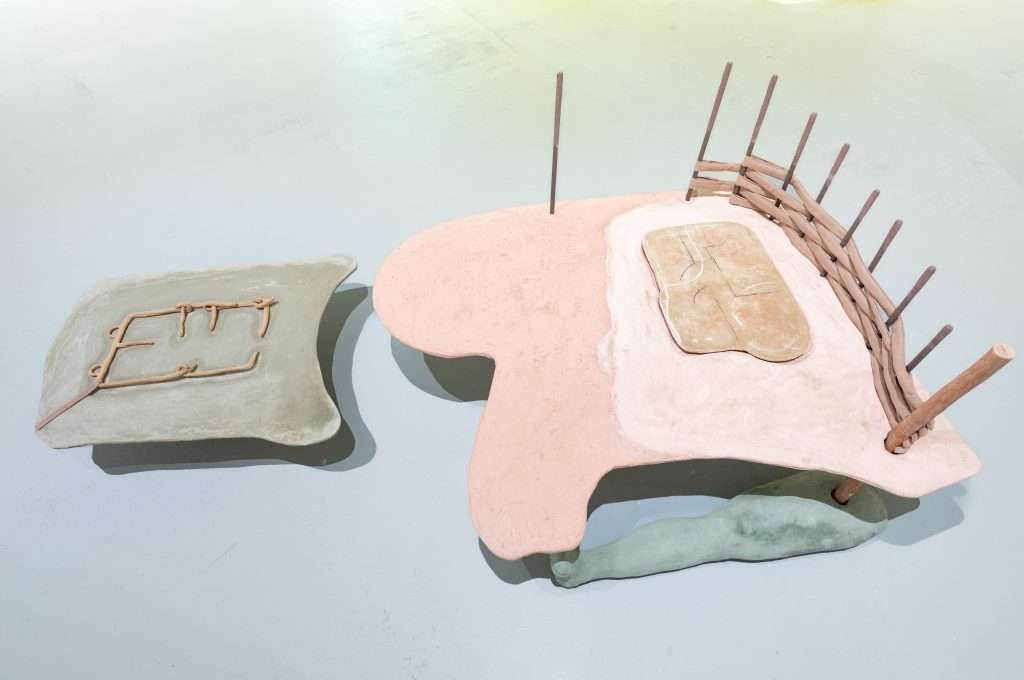
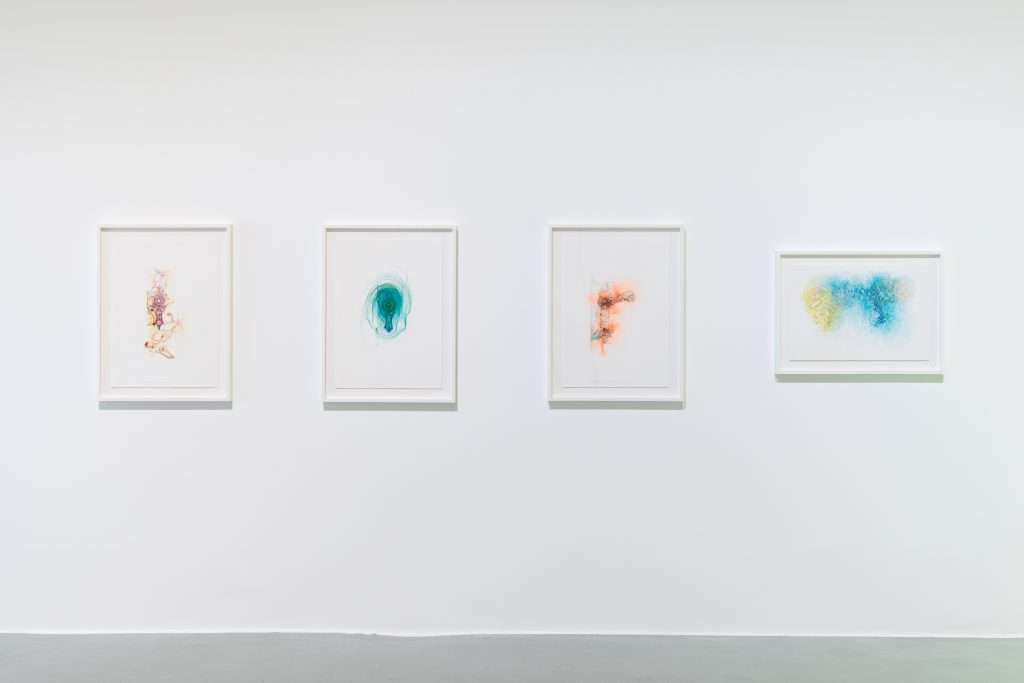
Tanoa Sasraku explores this idea in her work A Tower to Say Goodbye. Hanging from the ceiling like a tattered flag, this work was made during a residency in a disused postal sorting office during the pandemic. Made from layers of paper stitched together and then distressed (or unbuilt) it is a manifestation of the building’s effect on her. First shown in the sorting office and now displaced in Bermondsey, it also stands as a manifestation of her effect on the building. Do Ho Suh delves deeper into this sense of relocation and dislocation, using machine-rendered drawings of buildings he has lived in and then drawing back into them. The artist relinquishes control of the building, and then he takes it back.
Control is difficult to come by in a city under constant development. For many, The Pickle Factory, even with its quota of social housing, represents a slowly gentrifying area in which their presence is slowly built over, in which they no longer have a home. Jessie Brennan’s To Agitate, Still, hangs at the back of the room – the outcome of working with those on the neighbouring Setchell Estate. Remnants of the Estate’s plants litter paper sheets tacked onto the walls. An elegy and a manifesto, Brennan hopes the outcome of her work will encourage the Drawing Room’s continued work with diverse local audiences.
In the first room of this show, is the fruit of this hope. Working with three local groups, including a youth group, artists from across the globe encourage the community to draw themselves back into the story. The youth group are encouraged by artist Al Hassan Issah, to tack their drawings to trees, bus stops, and most movingly to the gates that guard The Pickle Factory. Briefly, the gated community has fallen in this exhibition.
Beyond the gates the gallery calls. It extends its permanent home to those dealing with impermanence. It does not give concrete answers to our lack of space but rather new ways of imagining home, of clinging on to one world and dreaming of another.
Drawing Room, 1b New Tannery Way. Bermondsey, SE1 5WS until 10th December. Admission: Free. Details: www.drawingroom.org.uk


